
2013 Enduro Bike Comparison: Husaberg TE300 vs FE350
The Great 2 stroke / 4 stroke Debate
2013 Husaberg 300 – 350 review
After King of the Motos, both our Husabergs were in fine shape so we made them go head to head in our own King of the Enduros competion
It is not often that I get asked a question that I don’t have an answer for .Now, I didn’t say it would be the correct answer, but I have opinions on most everything. But in this case, I find myself asking the question, just like many of you are too.Which is better, the 300 two stroke or the 350 four stroke? I am certainly not going to let the lack of a definitive answer stop me from exploring the query.
While we can make a variety of assumptions about both displacements, for specifics we are going to discuss the two bikes that we have just finished testing. These are the 2013 Husaberg FE350 and TE300. With nearly identical chassis specs, they are the perfect test platforms for isolating the specific differences in handing and performance.
Obviously these are not the only choices in the classes, but considering they are nearly identical to the KTM 300xcw and 350xcw models, we are covering a big chunk of the most popular choices. It would be great to do a wider range of testing and real shootouts, but it is just beyond our time and budget limitations. We are very fortunate that KTM/Husaberg makes as many bikes available to us as they do.
Over the years I have owned and raced at least three different 300 models, a couple of Orange bikes and a Gas Gas. We have tested three different ones in the last year; KTM, Gas Gas and Husaberg. Since 2011, I have spent more time riding 350 models than just about anything else. In 2011 I tested and raced the new all new 350xcf.
In the past 12 months we have had a 350xcw, 350exc and the current Husaberg FE350. While not in time for this, we also expect the Sherco 300i soon, hopefully as early as next month.
Let’s Talk Power
So do you want a bike that feels fast, goes fast or one that gets from point A to point B the quickest? My 525exc feels fast, the new 450xcf goes fast and the FE350 typically gets me to point B the quickest, particularly if the going gets technical.
The 350 platform has an incredible balance of power. It has an amazing ability to be “just right” most of the time. It is super easy to go fast on. It doesn’t spin the wheel or wheelie, it just puts the power to the ground and moves the bike forward.
It does not require much throttle control, you can just ball park it. Often wide open is the perfect position. The fuel injection reacts quickly and is not finicky.
Bottom line, the 350 just feels smooth.
So what about the 300? First of all, the 300 always has more peak horsepower on tap. On the dyno it is about 5-8 hp, depending on which 350 model you use for comparison. But how much of time can you use that extra power?
No doubt there are times that power comes in handy, for race starts, deep sand and such.
But for most 300 riders, I doubt they are holding the throttle to the stop that much. On the flip side, this same power can be a real handful at times. The 300 will wear you out quick if you just try to ride it too aggressively.
It takes a delicate hand ( lots of skill) to go fast in technical conditions. The 350 excels in conditions where traction is scarce. The 300 is better for quick reactions, like blipping the throttle to get the front wheel in the air instantly.
Paul Krause raced our FE350 in the King of the Motos, he placed second in the expert class. He also races a KTM 300xc. I talked with him about some of the differences in racing the two bikes in technical desert conditions.
Paul says that he struggles with the 300 on big hill climbs, the wheel breaks lose too easy. He tells me 350 was great for KoM because he had to stop and restart on some very steep hills and the 350 would just chug its way up without spinning.
This mirrors some of my own experiences. In fact I remember a big hill climb in a 2011 race, Paul told me about getting stuck behind a slow rider and he had to push the rest of the way up on his 450sxf. I fell on the same hill, in nearly the exact spot and was able to restart with the 350xcf.
So how do I account for the fact that all the world’s top extreme riders use 300’s? I blame most of it on their superhuman skills. Obviously, in the correct hands a 300 can do all kinds of amazing things.
It is probably the truly better motor. The 350 is just easier for most of us with inferior skills to use.
It’s All About The Handling
On paper, the big advantage of the 300 is the 10lbs less weight it is carrying around. If you spend much of your riding time lifting your bike over and around obstacles, you are going to appreciate that. When the need arises to quickly raise the front wheel, the two stroke is tops. Like other 4 strokes,the 350 tends to push its way through things instead of over them. But with a little extra weight and momentum, it typically feels smoother in doing so than 300.
The 350 might feel heavier than the 300, but it is still very light feeling compared to other thumpers.
In real world riding situations the scene is murky. The 350 has an amazing feel which is hard to quantify. The front wheel is planted to the ground and gives excellent traction and feedback.
Everything happens just a little slower and with consistency. The rider quickly gains a very good sense of how the bike will react in nearly any situation.
It is also very hard to upset the chassis. With a great balance of weight and inertia, the 350 has a distinct tendency to self-correct. On more than one occasion I have hit something wrong and had the rear end kick completely sideways, certainly beyond what I typically consider the point of no return.
But holding the throttle wide open in a panic rev, the bike lands, points itself forward and keeps going.
In general, tighter trails will favor the 300, once the terrain opens just a little the 350 comes into its own. The 300 always feels like it is dancing around just a bit and wants your attention to stay on the correct line. Again, the most experienced riders can take advantage of the lighter, more powerful 300.
For everyone else the 350 is easier to handle.
Top of the Charts
Weight – 300 gets the nod for overall weight
Peak Power – 300 again is tops in pure power
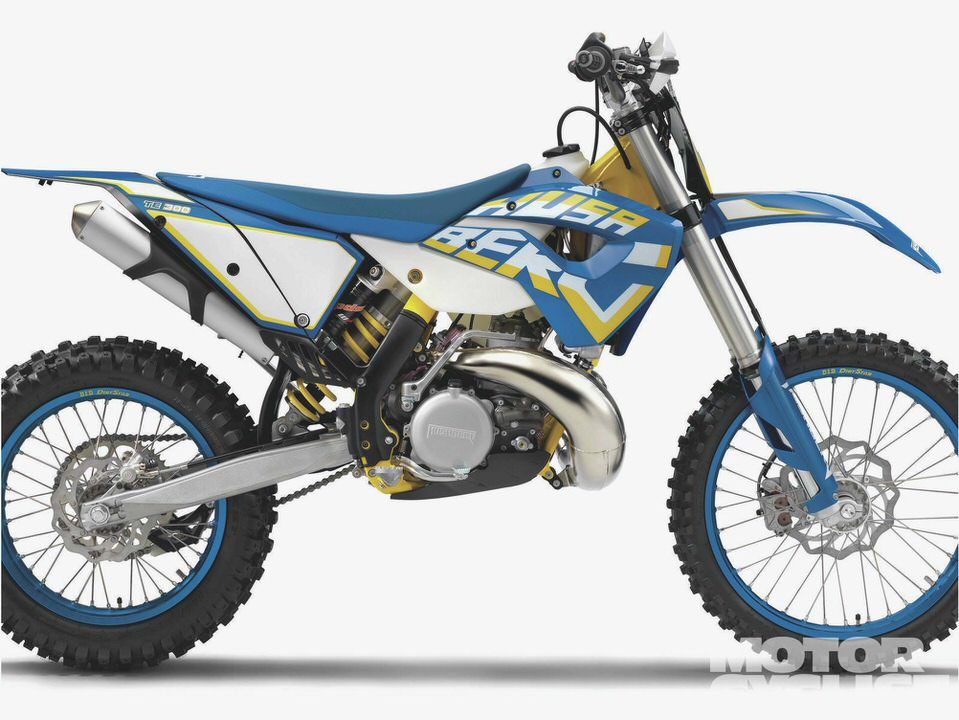
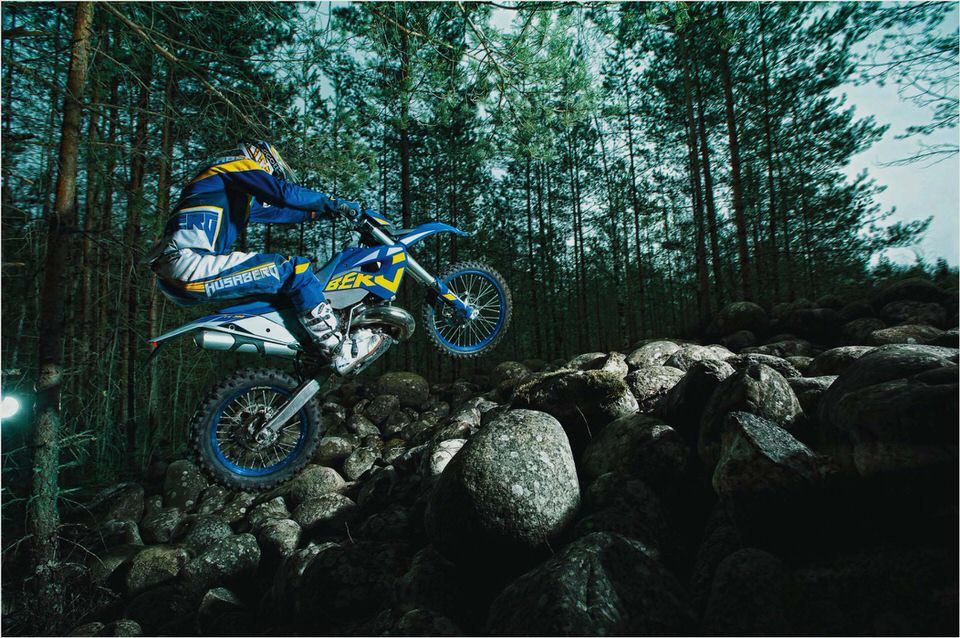
Real World Power – by a narrow margin the 350 has more usable power
Handling – this is a split decision, 300 best in the ultra- tight stuff, but the 350 is tops in a wider variety of conditions
Fuel Mileage – 350 kills it with up to 50mpg depending on model and riding. This also gives it the best range between fuel stops.
Initial Cost – 300 will save you $900 upfront for the xcw model
Long Term Cost – tough call, the 350 will be more expensive to rebuild, but may go longer on a top end. With added fuel consumption and premix costs, expense of 300 adds up too.
Maintenance Intervals – Neither bike needs much attention, but 300 gets nod for not having any valves. Both are easy on consumables like tires, chains and sprockets.
Dual Sport Use – 350 will make best all-around bike, with or without a plate
Track Use –in sxf or xcf configurations, 350 is the best for the track
E-start – they all have them
Models Choices – there are more 350 models, for everything from track to dual sport use
In Conclusion
Taking in the big picture, we are talking about very small differences. Testing the TE300 and FE350 together, I found myself perfectly happy on either. Simply having an existing preference for either a two stroke or four stroke is enough to make a decision on.
These bikes are that close to each other.
I think you can see that I am leaning towards the 350. I am always amazed at the versatility of the models. They are not the outright fastest bikes, but I find myself going faster because the power and handing are so confidence inspiring.
I feel very much in control and will push myself and the bike harder for it.
Track days, desert racing, Baja adventuring, I am happy to do it all on one bike; the 350exc. I call out the KTM model simply because it has the license plate also. I love passing people while sporting a plate and brake light. I have struggled a bit in the faster races, but I don’t like those kinds of courses anyway.
I really excel on the technical desert courses and the 350 is perfect for that.
So there you have my take on the 300/350 debate. It is not definitive; there is no clear winner. If you love riding two strokes, perhaps you are not missing too much in not having a 350 and vice versa. If you are on the fence about the 350, chances are you will like it.
Every time I see an experienced racer ride one, they come back very impressed and somewhat puzzled by the shear potential of the small bore bike.

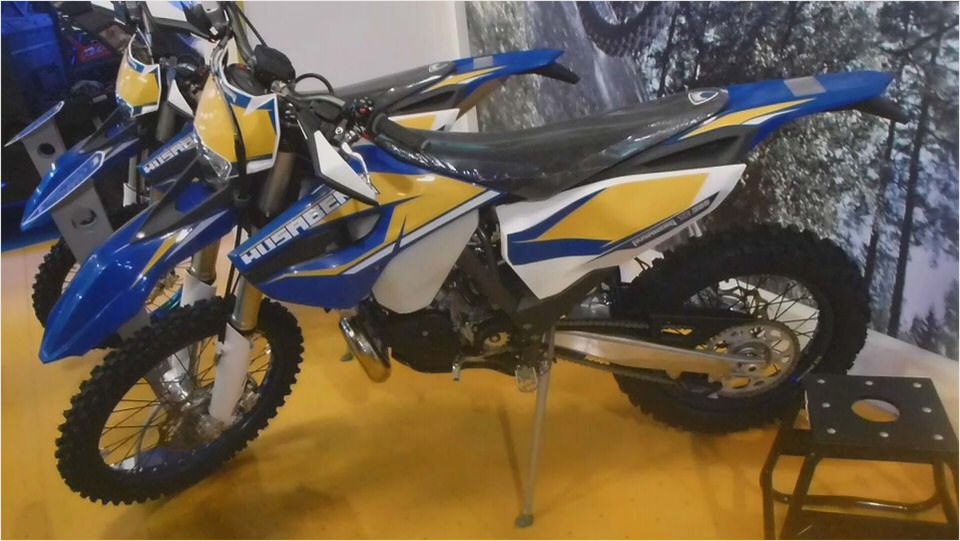
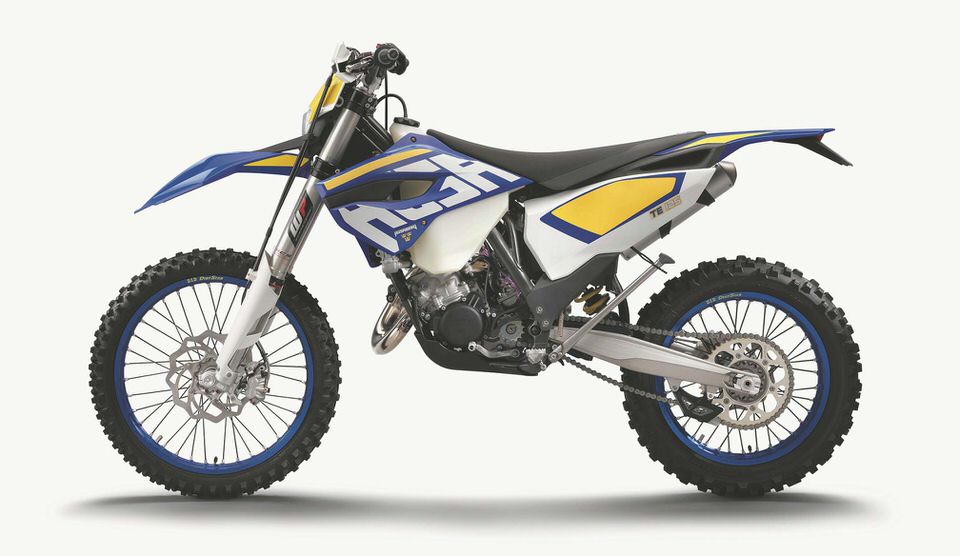
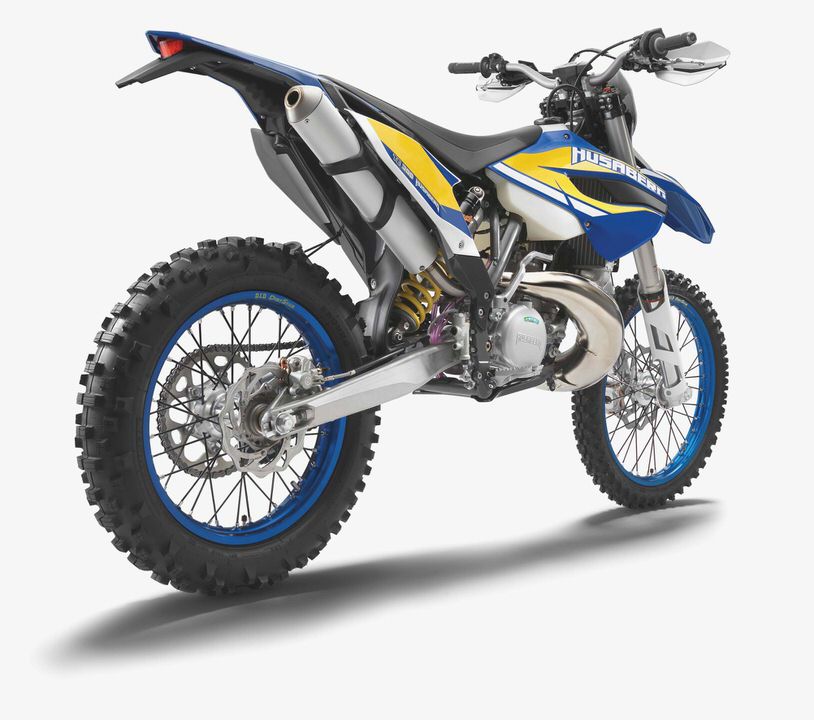
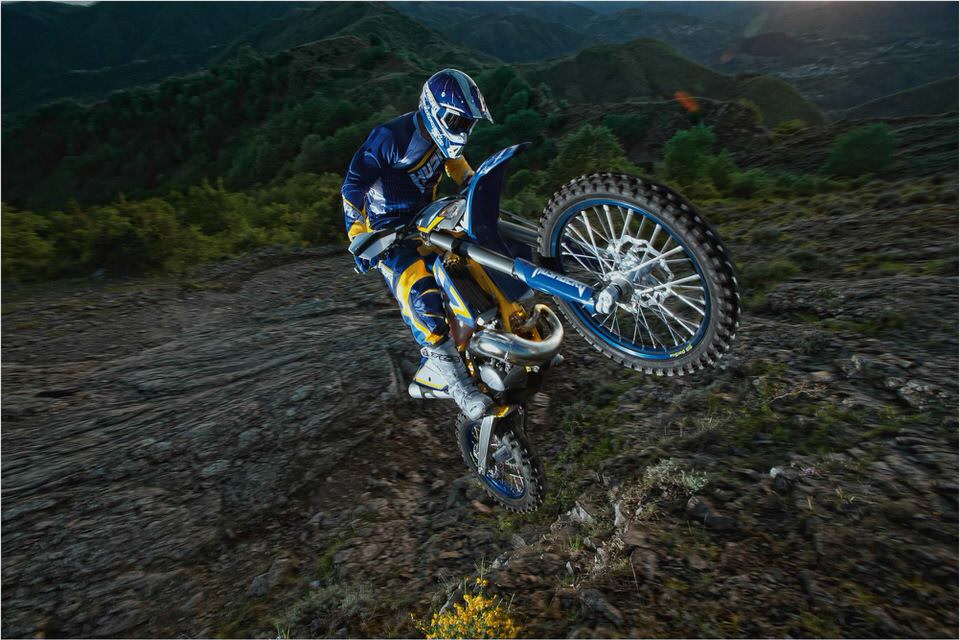
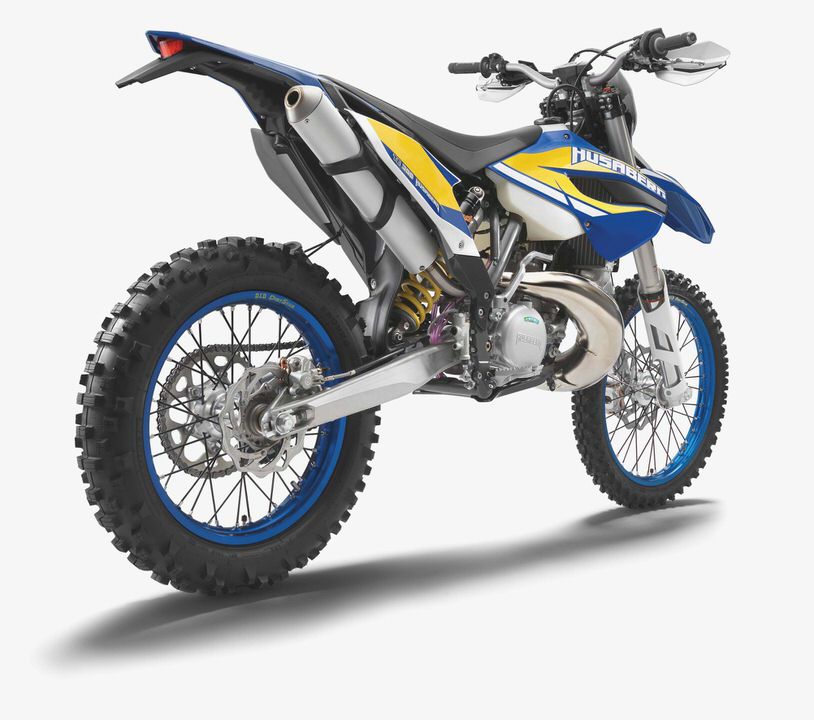
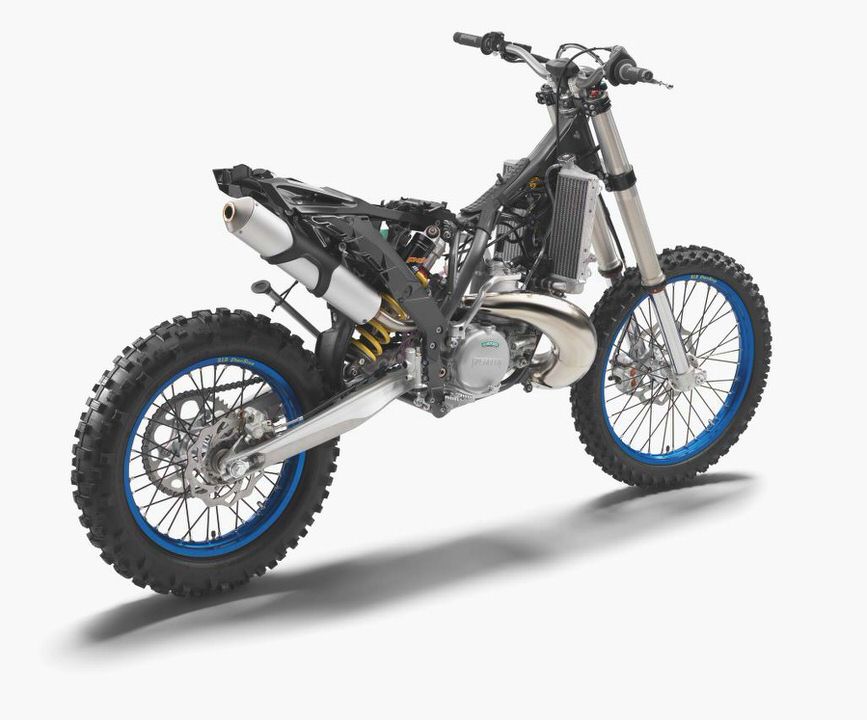

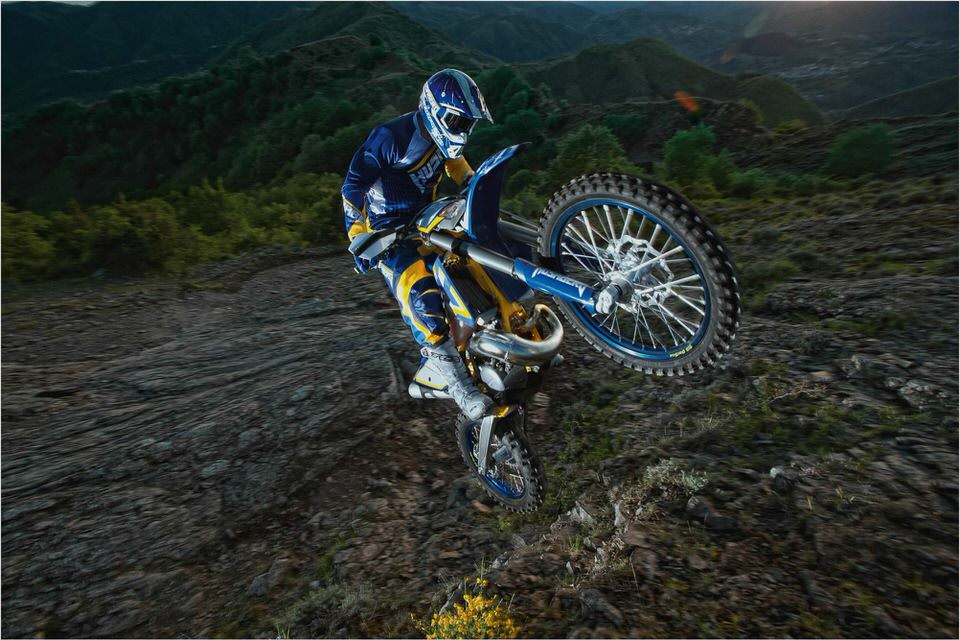
- Bikes Dirt Bike Rider Motocross News Magazine
- 2014 Husqvarna FC 450 Cross First Look Review & Stats
- 2014 Husaberg Lineup Announced – Final Edition Before Husqvarna Merger…
- 2013 Husaberg TE 300 Review and Picture Hero Motorcycle
- 2013 Husaberg Motorcycle Lineup Video – Ultimate MotorCycling
